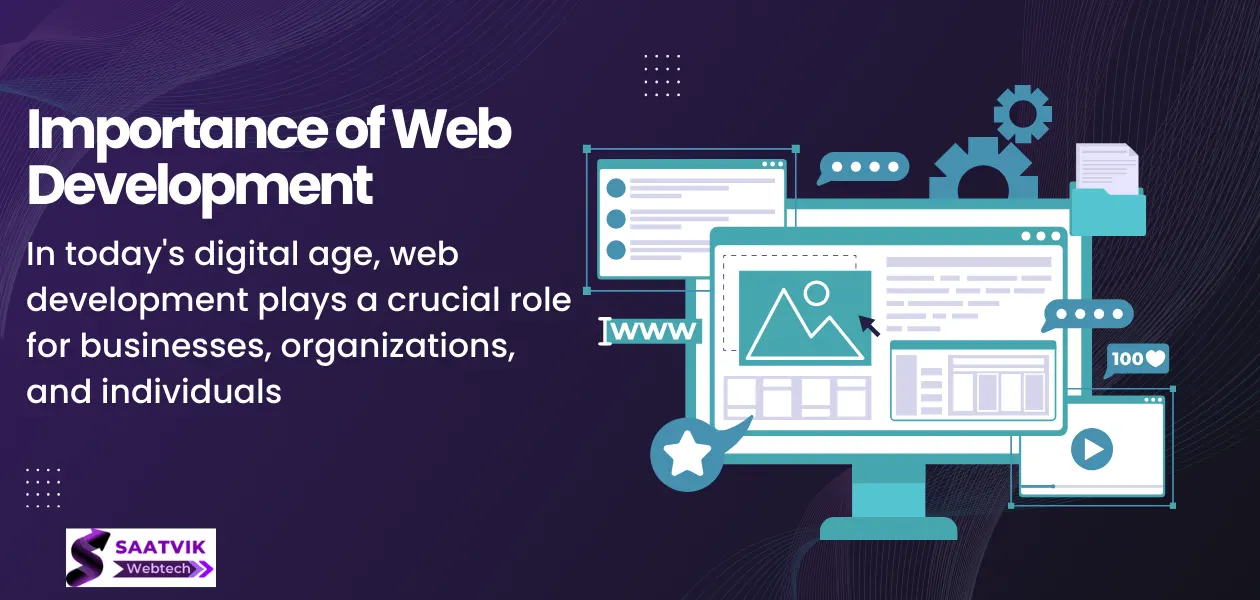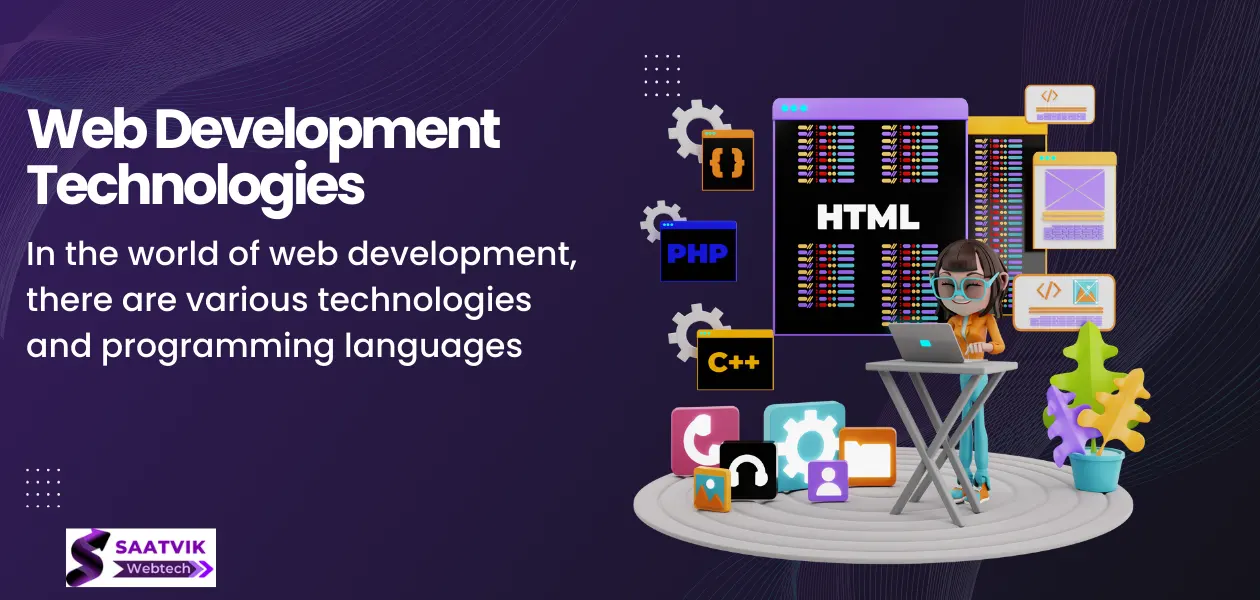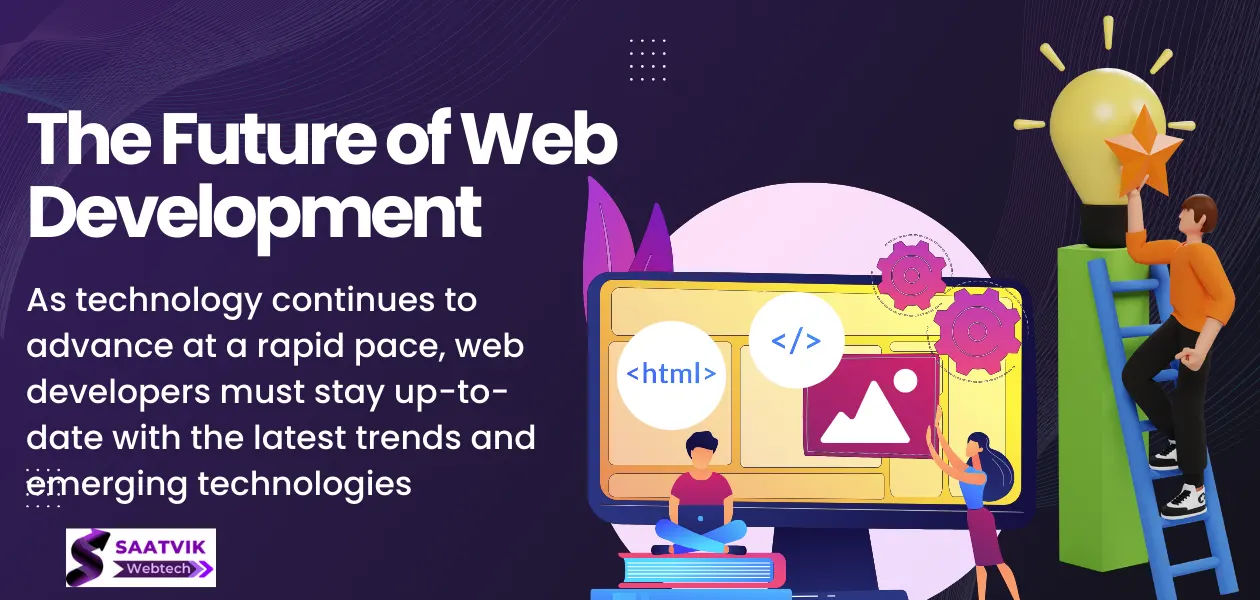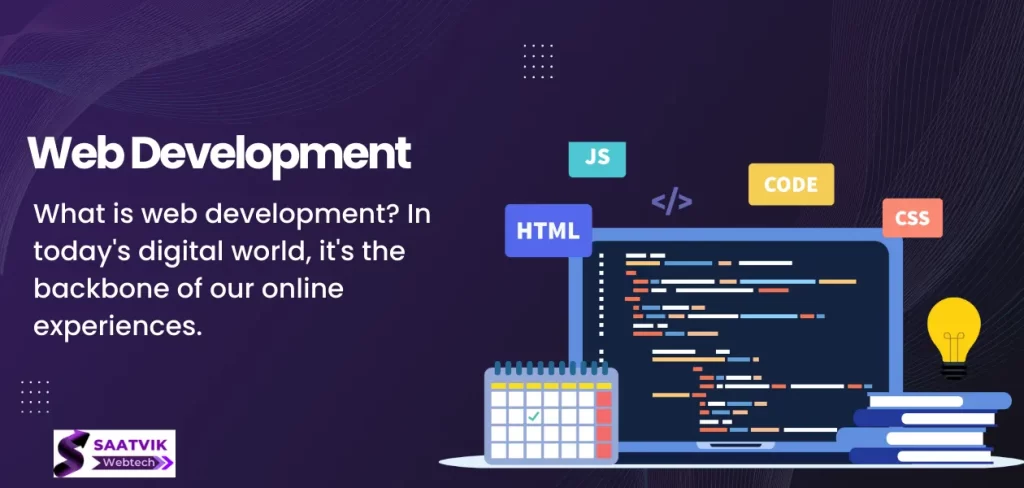What is web development? In today’s digital world, it’s the backbone of our online experiences. From the websites we visit for information to the interactive platforms we use daily, web development is the process that makes it all possible. In this article, we’ll break down the basics of web development, why it matters, and how websites come to life.
Key Takeaways:
- Web development is the process of creating and maintaining websites.
- Web development is essential for businesses, organizations, and individuals to establish an online presence.
- The web development process involves several stages, including planning, designing, coding, testing, and deployment.
- Web developers rely on various tools, such as text editors, frameworks, and libraries, to streamline the development process.
- Learning web development opens up career opportunities in a rapidly growing industry.
What is Web Development?
Web development is the process of creating and maintaining websites. It involves the design, coding, programming, and maintenance of web pages and applications. In simpler terms, web development is the behind-the-scenes work that brings websites to life and makes them functional.
Web development encompasses various aspects, including web design, front-end development, back-end development, and web server configuration. It incorporates different programming languages, frameworks, and technologies to build interactive and user-friendly websites.
Web developers use their technical skills to transform creative ideas into fully functional websites. They work closely with web designers to ensure that the websites they create are visually appealing and user-friendly while also being responsive and compatible across different devices and browsers.
Scope and Purpose of Web Development
The scope of web development extends beyond designing and coding websites. It includes creating web applications, e-commerce platforms, content management systems, and other online tools and services. Web development also involves optimizing websites for search engines, improving performance, and implementing security measures.
The purpose of web development is to enhance the online presence of businesses, organizations, and individuals. A well-developed website serves as a powerful marketing and communication tool, enabling businesses to reach their target audience and engage with potential customers. It allows organizations to showcase their products and services, share information, and facilitate transactions. For individuals, web development opens up opportunities to create personal blogs, portfolios, and online platforms to showcase their skills and talents.
In summary, web development is a multidimensional process that combines creativity, technical skills, and problem-solving abilities to create effective and visually appealing websites and web applications.
Importance of Web Development
In today’s digital age, web development plays a crucial role for businesses, organizations, and individuals alike. It is no longer enough to simply have a website; it must be well-designed, functional, and optimized to provide a seamless user experience.
The importance of web development can be summarized in three key points:
- Establishing an Online Presence: A well-developed website acts as a virtual storefront, allowing businesses to showcase their products and services to a global audience. It serves as a platform to attract and engage potential customers, establish credibility, and build brand awareness. Without a strong online presence, businesses risk being overlooked in today’s competitive market.
- Enhancing User Experience: Web development focuses on creating user-friendly interfaces, intuitive navigation, and responsive designs. This ensures that visitors can easily find the information they need, engage with the content, and achieve their goals. By providing a seamless user experience, businesses can increase customer satisfaction, encourage repeat visits, and drive conversions.
- Driving Business Growth: An effectively developed website can generate leads, increase sales, and drive business growth. By integrating e-commerce functionalities, businesses can expand their customer base and tap into new markets. Web development also allows for tracking and analysis of user behavior, enabling businesses to optimize their marketing strategies and improve overall performance.
Whether you are a small business owner, a nonprofit organization, or an individual looking to build your online presence, investing in web development is essential. It provides the foundation for success in today’s digital landscape, helping you reach your target audience, stand out from the competition, and achieve your goals.
The Web Development Process
In the world of web development, creating a website involves a systematic process that encompasses various stages. Understanding the web development process is crucial for ensuring the successful creation and deployment of a website. In this section, we will explore the step-by-step journey that takes place during web development, from conceptualization to design, coding, testing, and deployment.
1. Conceptualization
The first stage of the web development process is conceptualization. This involves defining the purpose and goals of the website, identifying the target audience, and determining the key features and functionality required. During this stage, the web development team works closely with the client to gather requirements and create a clear vision for the website.
2. Design
Once the concept is established, the web development process moves on to the design stage. This is where the visual appearance of the website begins to take shape. Designers create wireframes and mockups to showcase the layout, color schemes, typography, and overall aesthetic of the website. Client feedback and collaboration play a crucial role in refining the design and ensuring it aligns with the client’s brand and vision.
3. Coding
After the design is finalized, developers start coding the website using various programming languages such as HTML, CSS, and JavaScript. This stage involves converting the design into a functional website. Developers write clean and efficient code, ensuring compatibility across different browsers and devices. They also implement responsive design techniques to optimize the website for mobile and tablet users.
4. Content Integration
Once the core structure of the website is developed, content integration takes place. This involves adding text, images, videos, and other media elements to the website. Content management systems (CMS) like WordPress or Drupal are often used to streamline the process of adding and managing content. The content integration stage focuses on ensuring that the website delivers a seamless user experience and effectively conveys the desired information.
5. Testing and Quality Assurance
Prior to launching the website, thorough testing and quality assurance are conducted to identify and resolve any bugs or issues. This stage involves multiple rounds of testing, including functional testing, usability testing, performance testing, and compatibility testing across different devices and browsers. The website is rigorously checked to ensure it meets the highest standards of functionality, performance, and user experience.
6. Deployment
Once the website has successfully passed the testing phase, it is ready for deployment. During this stage, the website is uploaded to a web server and made available for public access. This involves configuring the server, domain name registration, and DNS setup. Developers ensure a smooth launch by implementing proper redirects, setting up analytics tracking, and taking care of any necessary security measures.
7. Maintenance and Updates
The web development process doesn’t end with the deployment of the website. Regular maintenance and updates are essential to keep the website running smoothly and securely. This includes monitoring the website for performance issues, fixing any bugs or errors, updating content and functionalities, and implementing security patches. Ongoing maintenance ensures that the website remains up-to-date, optimized, and aligned with the evolving needs of the business or organization.
Summary of the Web Development Process
To summarize, the web development process involves conceptualization, design, coding, content integration, testing, deployment, and ongoing maintenance. Each stage plays a vital role in the creation of a successful website. By following this structured process, web developers ensure the delivery of high-quality websites that meet the objectives and expectations of clients and users alike.
Web Development Tools
In the world of web development, having the right tools can make all the difference. From speeding up coding tasks to enhancing collaboration, the web development tools at our disposal allow us to create stunning websites efficiently and effectively. In this section, we will explore some of the essential tools that web developers rely on to bring their ideas to life. Let’s dive in!
Text Editors
Text editors are the foundation of any web developer’s toolkit. These tools provide a simple and efficient environment for writing code. Whether you prefer a lightweight editor like Sublime Text or a more feature-rich IDE like Visual Studio Code, the choice of text editor is a matter of personal preference. Whichever you choose, a good text editor will offer syntax highlighting, code completion, and customizable settings to suit your coding style.
Frameworks and Libraries
Frameworks and libraries are pre-written pieces of code that help developers build websites faster and more efficiently. They provide a set of ready-made functions and modules that simplify common tasks and enhance productivity. Popular frameworks like Bootstrap and Foundation offer CSS and JavaScript components for building responsive and visually appealing websites. On the other hand, libraries like jQuery and React.js provide powerful JavaScript functionalities for interactivity and dynamic content.
Version Control Systems
When multiple developers work on a web development project, it becomes crucial to manage code changes and collaborate effectively. Version control systems like Git provide a centralized repository where developers can track changes, merge code, and work together seamlessly. With version control, developers can easily revert to previous versions, resolve conflicts, and maintain a clean and organized codebase.
Browser Developer Tools
Browser developer tools are built-in features in web browsers that allow developers to inspect, debug, and optimize websites. These tools, such as Chrome DevTools and Firefox Developer Tools, provide a wealth of information about a website’s HTML, CSS, JavaScript, and network performance. Developers can use these tools to identify and fix issues, test responsive layouts, and analyze website performance to ensure a smooth user experience.
Testing and Deployment Tools
Once a website is developed, it needs to be thoroughly tested before deployment. Testing tools like Selenium automate the testing process, allowing developers to check for any bugs, compatibility issues, or inconsistencies across different browsers and devices. Deployment tools like GitHub Pages and Netlify simplify the process of deploying websites to production servers, ensuring a smooth and seamless launch.
These are just a few of the many web development tools available to developers today. As technology advances, new tools and technologies continue to emerge, offering exciting possibilities for web development. By staying up-to-date with the latest tools and leveraging them effectively, web developers can continue to push the boundaries of what is possible on the web.
Web Development Technologies
In the world of web development, there are various technologies and programming languages that drive the creation of interactive and dynamic websites. In this section, we will explore some of the key technologies commonly used by developers to bring their web projects to life.
HTML (Hypertext Markup Language)
HTML is the backbone of every web page. It provides the structure and content of a website, allowing developers to define headings, paragraphs, lists, images, links, and more. HTML code is written using tags, which create different elements that make up a web page.
CSS (Cascading Style Sheets)
CSS is responsible for the presentation and styling of a website. With CSS, developers can control the colors, fonts, layouts, and overall visual appearance of web pages. By separating the content from its presentation, CSS allows for easier website maintenance and consistent design across multiple pages.
JavaScript
JavaScript is a powerful programming language used to add interactivity to websites. It enables developers to create dynamic elements, handle user actions, and manipulate website content in real-time. JavaScript is commonly used for creating things like image sliders, form validation, interactive maps, and much more.
Other Programming Languages and Frameworks
Besides HTML, CSS, and JavaScript, web developers often work with other programming languages and frameworks to enhance their websites’ functionality and performance. Some popular programming languages for web development include:
- Python
- PHP
- Ruby
- Java
Frameworks such as React, Angular, and Vue.js are also widely used to streamline the development process and provide ready-to-use components and functionalities.
| Technology | Key Features |
| HTML | Structure and content of web pages |
| CSS | Visual styling and presentation of web pages |
| JavaScript | Adding interactivity and dynamic elements to websites |
| Python | Used for backend web development and data processing |
| PHP | Server-side scripting language for web development |
| Ruby | Flexible and beginner-friendly language for web development |
| Java | Scalable and versatile language for building web applications |
| React | Javascript library for building user interfaces |
| Angular | JavaScript framework for developing robust web applications |
| Vue.js | Progressive JavaScript framework for building user interfaces |
These are just a few examples of the many technologies and tools available for web development. The choice of technologies depends on project requirements, developer preferences, and industry trends. By staying informed about the latest advancements in web development technologies, developers can create modern, efficient, and user-friendly websites.
Learning Web Development
Are you eager to learn web development and embark on an exciting journey in the world of creating websites? In this section, we will introduce you to various resources that cater to beginners, offering web development courses, tutorials, and valuable tips.
Web Development Courses
If you prefer a structured learning approach, web development courses can be an excellent choice. Many online platforms and educational institutions offer comprehensive courses that cover the essential concepts and practical skills needed to become a proficient web developer. Whether you’re a novice or have some coding experience, these courses can provide a solid foundation and set you on the path to success.
Web Development Tutorials
For those who prefer a more self-paced learning experience, web development tutorials are a great option. These tutorials often come in the form of blog posts, videos, or interactive websites that guide you through different topics and help you grasp the core concepts of web development. Whether you’re interested in HTML, CSS, JavaScript, or other programming languages, you can find tutorials tailored to your specific learning needs.
Tips for Learning Web Development
Learning web development can be an exciting yet challenging endeavor. To make the most of your learning journey, here are a few tips to keep in mind:
- Start with the basics: Familiarize yourself with HTML, CSS, and JavaScript—the foundational languages of web development.
- Practice regularly: Consistency is key when learning web development. Set aside dedicated time each day to practice coding and build projects.
- Join online communities: Engage with fellow learners and experienced developers in web development forums, social media groups, and coding communities. This will not only provide support but also expose you to diverse perspectives and resources.
- Work on real-world projects: Apply your knowledge and skills to real-world scenarios by building your own websites or collaborating on open-source projects. This hands-on experience will enhance your understanding and showcase your abilities to potential employers.
- Stay updated: Web development is a rapidly evolving field. Keep up with the latest trends, technologies, and best practices to ensure your skills remain relevant and competitive.
By leveraging web development courses, tutorials, and implementing effective learning strategies, you’ll be well on your way to becoming a proficient web developer.
| Resource | Description | Website |
| Codecademy | A popular online learning platform offering interactive web development courses. | www.codecademy.com |
| FreeCodeCamp | An open-source community that provides web development tutorials and hands-on projects. | www.freecodecamp.org |
| MDN Web Docs | An extensive web development resource offering tutorials and detailed documentation on various technologies. | developer.mozilla.org |
Explore these resources and more to kickstart your web development journey and unlock the endless possibilities that await.
 A Career in Web Development
A Career in Web Development
If you’re considering a career in web development, you’ve come to the right place. In this section, we will provide you with valuable insights into the opportunities, skills, and qualifications required to pursue a successful career as a web developer. We will also touch upon the current job market trends and potential salary expectations to help you make an informed decision.
Opportunities in Web Development: A World of Possibilities
The ever-growing demand for skilled web developers translates into a wealth of exciting career opportunities. With businesses across industries recognizing the power of a strong online presence, the field offers diverse specializations and work environments to suit your interests and aspirations. Here’s a closer look at some of the in-demand roles:
- Front-end Developer: You’ll be the architect of the user experience. Using HTML, CSS, and JavaScript, you bring websites to life, focusing on design, layout, interactivity, and responsiveness across devices.
- Back-end Developer: You’ll handle the behind-the-scenes magic. Using languages like Python, PHP, or Ruby, you’ll build the logic, databases, and server-side functionality that power websites and applications.
- Full-stack Developer: The ultimate web development hybrid! You’ll master both front-end and back-end technologies, enabling you to build complete web solutions from start to finish.
- Web Designer: Your focus is on visual appeal and usability. Combining design principles with web technologies, you’ll create websites that are both beautiful and easy to navigate.
- UI/UX Developer: You’ll champion the user! Specializing in user interface (UI) and user experience (UX) design, you’ll research user needs, create prototypes, and ensure seamless interactions throughout the website.
Flexibility and Choice
The world of web development offers great flexibility. You can choose to:
- Work in-house: Join the tech team of a large corporation or a growing startup.
- Become an agency pro: Contribute to a variety of projects at a digital agency.
- Embrace the freelance life: Enjoy the freedom to set your own hours and choose your clients.
The possibilities are truly endless! As you gain experience and discover your niche, you can progress into more specialized or senior roles, shaping the future of online experiences.
Skills and Qualifications
To succeed as a web developer, certain skills and qualifications are highly valued in the industry. Some of these include:
- Proficiency in HTML, CSS, and JavaScript
- Familiarity with programming languages such as Python, Ruby, or PHP
- Knowledge of front-end frameworks like React, Angular, or Vue.js
- Experience with back-end frameworks like Node.js, Django, or Laravel
- Understanding of databases and SQL
- Ability to work with version control systems like Git
- Strong problem-solving and debugging skills
- Good communication and collaboration abilities
While a formal education in computer science or a related field can be beneficial, it is not always a prerequisite for a career in web development. Many successful web developers are self-taught and have built their skills through online courses, tutorials, and hands-on experience.
Job Market Trends and Salary Expectations
The job market for web developers is highly competitive. However, the demand for skilled professionals in this field continues to grow. According to industry reports, the employment of web developers is projected to grow faster than average over the next few years.
As for salary expectations, it can vary based on factors such as your experience, location, and the specific role you pursue. On average, web developers in India can expect to earn an annual salary ranging from INR 3,00,000 to INR 10,00,000. With experience and expertise, you can command higher compensation.
It’s important to note that these figures are approximate and can vary depending on individual circumstances and market conditions.
Web Development Trends
In today’s rapidly evolving digital landscape, web development trends play a crucial role in shaping the future of online experiences. As technology advances, developers seek innovative ways to enhance user engagement, improve website performance, and deliver seamless interactions across various devices.
Responsive Design
Responsive design has become a fundamental web development trend. With the increasing use of mobile devices, websites must adapt to different screen sizes and resolutions. By utilizing responsive design techniques, developers ensure that websites look and function optimally across smartphones, tablets, and desktops, providing a consistent user experience.
Mobile Optimization
As mobile usage continues to rise, web developers are focusing on mobile optimization trends to deliver fast-loading, user-friendly websites on smaller screens. This involves optimizing images, reducing code, and implementing techniques such as lazy loading and browser caching to enhance mobile performance.
Progressive Web Apps (PWAs)
Progressive Web Apps (PWAs) are gaining prominence as a popular web development trend. These web applications leverage modern web capabilities to offer an app-like experience. PWAs can be accessed directly from a browser, eliminating the need for app installation, and provide features such as offline functionality, push notifications, and seamless updates.
Single-Page Applications (SPAs)
Single-Page Applications (SPAs) have become a prevalent trend in web development. SPAs load content dynamically without refreshing the entire web page, providing a fluid, seamless user experience similar to that of native applications. This trend is driven by frameworks like Angular, React, and Vue.js, which enable developers to build highly interactive and responsive SPAs.
Voice User Interface (VUI)
Voice User Interface (VUI) is an emerging trend that is revolutionizing how users interact with websites. With the increased adoption of voice assistants like Siri, Alexa, and Google Assistant, web developers are incorporating voice commands and voice search capabilities into websites. This trend aims to provide users with a more natural and convenient way to navigate and interact with web content.
Artificial Intelligence (AI) Integration
The integration of Artificial Intelligence (AI) in web development is on the rise. AI-powered chatbots, recommendation engines, and personalized user experiences are becoming more prevalent. By leveraging machine learning algorithms, developers can create websites that adapt to user behavior, provide tailored recommendations, and offer intelligent customer support.
Immersive Technologies
Immersive technologies such as Virtual Reality (VR) and Augmented Reality (AR) are transforming the web development landscape. Developers are incorporating VR and AR experiences into websites, bringing a new level of interactivity and engagement to users. These technologies are widely used in sectors like gaming, e-commerce, real estate, and education.
Security and Privacy
In an era of increased cybersecurity threats, web development trends also focus on ensuring robust security and privacy measures. Developers are implementing SSL encryption, two-factor authentication, and other security protocols to protect user data. Privacy-enhancing technologies, such as cookie-less tracking and privacy-focused analytics, are gaining traction to prioritize user privacy.
By staying updated with these web development trends, developers can create innovative and user-centric websites that meet the evolving needs of today’s digital consumers. Embracing these trends not only enhances online experiences but also provides a competitive advantage in the ever-changing digital landscape.
Mastering Web Development
Ready to take your web development skills to the next level? In this section, we will provide tips and suggestions to help you become a proficient web developer. Whether you’re a beginner or have some experience in web development, there are various paths you can take to enhance your skills and knowledge.
- Enroll in Web Development Courses: One of the most effective ways to master web development is by taking structured online courses. There are numerous web development courses available, catering to different skill levels and programming languages. These courses provide comprehensive learning materials, hands-on projects, and expert guidance to help you gain a deep understanding of web development concepts and techniques.
- Learn from Online Tutorials and Resources: In addition to formal courses, there are many online tutorials, blog posts, and coding forums that offer valuable resources for learning web development. These resources cover a wide range of topics, from HTML and CSS fundamentals to advanced JavaScript frameworks. Exploring these materials can complement your learning journey and provide practical insights into real-world web development scenarios.
- Practice with Hands-On Projects: To truly master web development, it’s crucial to get hands-on experience by working on practical projects. Building your own websites or collaborating on open-source projects helps you apply the concepts and skills you’ve learned. It also allows you to encounter and overcome real-world challenges, enhancing your problem-solving abilities and fostering creativity in your development process.
- Stay Updated with the Latest Trends: Web development is a rapidly evolving field, with new technologies and trends emerging regularly. To keep up with the industry, it’s essential to stay updated with the latest advancements. Follow reputable blogs, attend webinars, and join online communities to stay informed about the latest frameworks, tools, and techniques. This knowledge will help you stay competitive and adapt to the evolving needs of web development.
- Collaborate and Network: Networking with other web developers and industry professionals can significantly benefit your learning journey. Join web development communities, attend meetups, and engage in online forums to connect with like-minded individuals. Collaborating on projects, sharing knowledge, and seeking advice from experienced developers can provide valuable insights and help you grow as a web developer.
By following these tips and consistently dedicating time and effort to learning and practicing web development, you can master the essential skills needed to excel in this dynamic and ever-growing field.
 The Future of Web Development
The Future of Web Development
In this section, we will explore what the future holds for web development. As technology continues to advance at a rapid pace, web developers must stay up-to-date with the latest trends and emerging technologies in order to create innovative and user-friendly websites. Let’s take a look at some of the key web development trends that are shaping the future:
1. Artificial Intelligence (AI) Integration
The integration of artificial intelligence into web development is set to revolutionize the user experience. From chatbots and virtual assistants to personalized content recommendations, AI will enable websites to provide highly tailored and interactive experiences for users.
2. Responsive and Mobile-First Design
In an increasingly mobile-centric world, responsive and mobile-first design has become essential. Websites that adapt seamlessly across various devices and screen sizes will continue to dominate the digital landscape, ensuring optimal user experience and engagement.
3. Progressive Web Apps (PWAs)
Progressive Web Apps combine the best elements of both websites and mobile apps. PWAs are fast, reliable, and offer an app-like experience without the need for installation. As PWAs continue to gain popularity, web developers will need to focus on creating immersive and user-friendly web experiences.
4. Voice User Interface (VUI)
Voice-controlled devices and assistants have become increasingly prevalent in our daily lives. Web developers must adapt to this shift by optimizing websites for voice search and creating voice-friendly interfaces to cater to the growing number of users interacting with websites through voice commands.
5. Cybersecurity and Privacy
With the increasing number of cybersecurity threats and data breaches, web developers must prioritize cybersecurity and privacy. Implementing strong encryption, secure authentication protocols, and data protection measures will be crucial to ensure the trust and safety of website users.
6. Augmented Reality (AR) and Virtual Reality (VR)
AR and VR technologies have the potential to revolutionize web development, offering immersive and interactive experiences. From virtual shopping experiences to interactive product demos, web developers will need to leverage AR and VR to engage and captivate users.
7. Blockchain Integration
The integration of blockchain technology into web development has the potential to revolutionize security, transparency, and data management. By implementing blockchain for secure transactions and decentralized applications, web developers can enhance trust and streamline processes.
As we look ahead, these trends will shape the future of web development, guiding the evolution of websites and user experiences. Adapting to these trends and embracing new technologies will be key for web developers to stay at the forefront of the industry.
| Trend | Description |
| Artificial Intelligence (AI) Integration | Integrating AI technology into websites for a personalized and interactive user experience. |
| Responsive and Mobile-First Design | Creating websites that adapt seamlessly across devices and screen sizes for optimal user experience. |
| Progressive Web Apps (PWAs) | Building web applications that provide app-like experiences without installation. |
| Voice User Interface (VUI) | Optimizing websites for voice search and creating voice-friendly interfaces. |
| Cybersecurity and Privacy | Implementing strong security measures to protect user data and ensure privacy. |
| Augmented Reality (AR) and Virtual Reality (VR) | Building immersive and interactive experiences using AR and VR technologies. |
| Blockchain Integration | Implementing blockchain technology for secure transactions and decentralized applications. |
